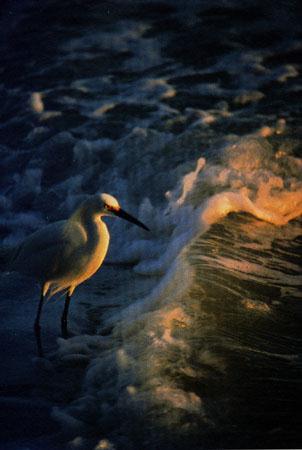|
| 질의: Small white | 결과: 2097번째/2237 | |
Snowy Egret (Egretta thula) (아메리카쇠백로)
| 제목: | Snowy Egret (Egretta thula) (아메리카쇠백로)
| |

| 해상도: 302x450
파일크기: 20726 Bytes
등록시간: 2005:01:16 23:59:57
|
From: bub@bubba.com
Newsgroups: alt.binaries.pictures.animals
Subject: Repost - sn_egret.jpg (1/1)
Date: 14 Dec 1997 05:27:16 GMT
Comments
=========
The snowy egret (Egretta thula) is a small white heron. The snowy egret is native to North, Central and South America.
Adult snowy egrets are entirely white apart from the yellow lores between the long black bill and the eye, black legs, and bright yellow feet. The nape and neck bear long, shaggy plumes known as aigrettes. Immature snowy egrets have duller, greenish legs. |
^o^
동물그림창고 똑똑전화 누리집
^o^
|
|